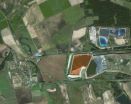Train a computer to classify pictures and videos based on the elements that they contain
2010-10-14
(Press-News.org) University of Granada researchers have developed a new computer technique that allows to "train" computers to interpret the visual contents of a video or picture. This advance will allow to classify automatically pictures basing on whether individuals or specific objects are present in such images. Videos can also be classified according to specific poses.
At present, computer search and classification of images is made basing on the name of the file, folder or on features as date or size, but the visual information contained was never used for classification purposes. This study conducted by the University of Granadaa will allow to employ this parameter in the short term for classifying videos according to actions performed by individuals.
The research conducted by Manuel Jesús Marín Jiménez, who is currently working at the University of Córdoba, and coordinated by Professor Nicolás Pérez de la Blanca Capilla, Department of Computering and Artificial Intelligence, University of Granada.
A Specific Pose
Apart from detecting individuals in TV video/film shots, this new technique allows to estimate the position of upper limbs (head, chest, arms and forearms) and the automatic classification of video scenes where people appear in a specific pose. Human actions such as walking, jumping, bending down, etc. can also be detected in video sequences.
As Marín Jiménez explains, currently, there is great interest in important international companies as Microsoft or Google in making computers interpret automatically the visual contents of images and video. "Our work is a contribution towards progress in this demanding challenge" the researcher states.
The results of this research have been presented in a number of international conferences such as the International Conference in Pattern Recognition (2006), and the conference on Computer Vision and Pattern Recognition (2008 and 2009).
Example Images:
- People detection on TV:
http://www.robots.ox.ac.uk/~vgg/software/UpperBody/index.html
- Estimation and recognition of human poses:
http://www.robots.ox.ac.uk/~vgg/research/pose_estimation/index.html
INFORMATION:
NOTE: The images shown in this work were provided by the University of Oxford and the ETH, Zurich.
Contact: Manuel Jesús Marín Jiménez. Departament of Computering and Numerical Analysis, University of Cordoba. Phone: +34 957 212 172 – 958 243 301. E-mail: mjmarin@uco.es
Accessible on English version
Accesible en Versión española
Accessible sur le site Version française
END
ELSE PRESS RELEASES FROM THIS DATE:
2010-10-14
HOBOKEN, N.J. (Sept. 13, 2010) – More than 50 million Americans will experience some degree of tinnitus in their lifetime, according to the American Tinnitus Association. Tinnitus is a hearing condition that causes the constant misperception of sound, including hissing, ringing and rushing noises. A study recently published in Panminerva Medica reveals that Pycnogenol® (pic-noj-en-all), an antioxidant plant extract derived from the bark of the French maritime pine tree, is effective in relieving tinnitus symptoms by improving blood flow in the inner ear.
"Impaired blood ...
2010-10-14
San Francisco, Calif., 13 October, 2010 - Elsevier Business Intelligence, publisher of PharmAsia News, IN VIVO and "The Pink Sheet," today announced the agenda for Windhover's 2nd PharmAsia Summit (Oct. 25-26). This year's Summit will bring top biopharma leaders from Asia and the U.S. to San Francisco to share what works and what doesn't in China, India, Japan and the Pacific Rim.
At the PharmAsia Summit, you'll hear Asia strategies and case studies from industry leading experts on dealmaking, commercial strategy, outsourcing, regulatory risks, IP protection, and pricing ...
2010-10-14
(NEW YORK, NY, October 13, 2010) – Before Alzheimer's patients experience memory loss, the brain's neurons have already suffered harm for years.
A new study in mouse models by researchers at Columbia University Medical Center has found that the brain's mitochondria -- the powerhouses of the cell -- are one of the earliest casualties of the disease. The study, which appeared in the online Early Edition of PNAS, also found that impaired mitochondria then injure the neurons' synapses, which are necessary for normal brain function.
"The damage to synapses is one of the ...
2010-10-14
Washington, DC, 13 October 2010 - Mental disorders in children are often difficult to identify due to the myriad of changes that occur during the normal course of maturation. For the first time, researchers at the National Institute of Mental Health have reported on the prevalence data on a broad range of mental disorders in a nationally representative sample of U.S. adolescents, which show that approximately one in five children in the U.S. meet the criteria for a mental disorder severe enough to disrupt their daily lives.
The prevalence of the mental health disorders ...
2010-10-14
Astronomers using the South Pole Telescope report that they have discovered the most massive galaxy cluster yet seen at a distance of 7 billion light-years. The cluster (designated SPT-CL J0546-5345) weighs in at around 800 trillion Suns, and holds hundreds of galaxies.
"This galaxy cluster wins the heavyweight title. It's among the most massive clusters ever found at this distance," said Mark Brodwin, a Smithsonian astronomer at the Harvard-Smithsonian Center for Astrophysics. Brodwin is first author on the paper announcing the discovery, which appeared in the Astrophysical ...
2010-10-14
CHAMPAIGN, lll. — A diet rich in the plant compound luteolin reduces age-related inflammation in the brain and related memory deficits by directly inhibiting the release of inflammatory molecules in the brain, researchers report.
Luteolin (LOOT-ee-oh-lin) is found in many plants, including carrots, peppers, celery, olive oil, peppermint, rosemary and chamomile.
The new study, which examined the effects of dietary luteolin in a mouse model of aging, appears in the Journal of Nutrition.
The researchers focused on microglial cells, specialized immune cells that reside ...
2010-10-14
BLOOMINGTON, Ind. -- The red, metal-laden sludge that escaped a containment pond in Hungary last week could be made less toxic with the help of carbon sequestration, says an Indiana University Bloomington geologist who has a patent pending on the technique.
The bauxite residue now covers 40 square kilometers south of the Danube River, and has caused the deaths of eight Hungarians and injured at least 150. The residue also has caused the extinction of life in a local river and as yet unknown environmental damage elsewhere. While human deaths in the wake of the disaster ...
2010-10-14
TORONTO, Ont., October 13, 2010 — A new material similar to that used by the U.S. Military to treat traumatic injuries is showing promise as the next novel treatment for bleeding ulcers, a condition that commonly affects up to 15 per cent of adults, according to Hong Kong physician Dr. James Lau.
Dr. Lau is presenting his findings today on this world-first research at the 23rd International Course on Therapeutic Endoscopy. The course is a world-renowned international conference on the latest innovations in endoscopy organized and hosted by St. Michael's Hospital.
"Nearly ...
2010-10-14
Oct. 13, 2010 — Nutrition rating systems and symbols on the fronts of food packaging would be most useful to shoppers if they highlighted four nutrients of greatest concern – calories, saturated fat, trans fat, and sodium – says a new report from the Institute of Medicine. These food components are routinely overconsumed and associated most strongly with diet-related health problems affecting many Americans, including obesity, heart disease, high blood pressure, Type 2 diabetes, and certain types of cancer.
Given the limited space on package fronts and the information ...
2010-10-14
(Boston) - Investigators from the Slone Epidemiology Center at Boston University School of Medicine (BUSM) have reported that the use of a web-based questionnaire can be a cost-effective tool for obtaining survey response.
The study results, published in the American Journal of Epidemiology, were based on data from the Black Women's Health Study (BWHS), a large prospective cohort study of 59,000 African American women from across the U.S. conducted by investigators at the Slone Epidemiology Center since 1995.
The participants are sent paper questionnaires every two ...
LAST 30 PRESS RELEASES:
[Press-News.org] Train a computer to classify pictures and videos based on the elements that they contain


